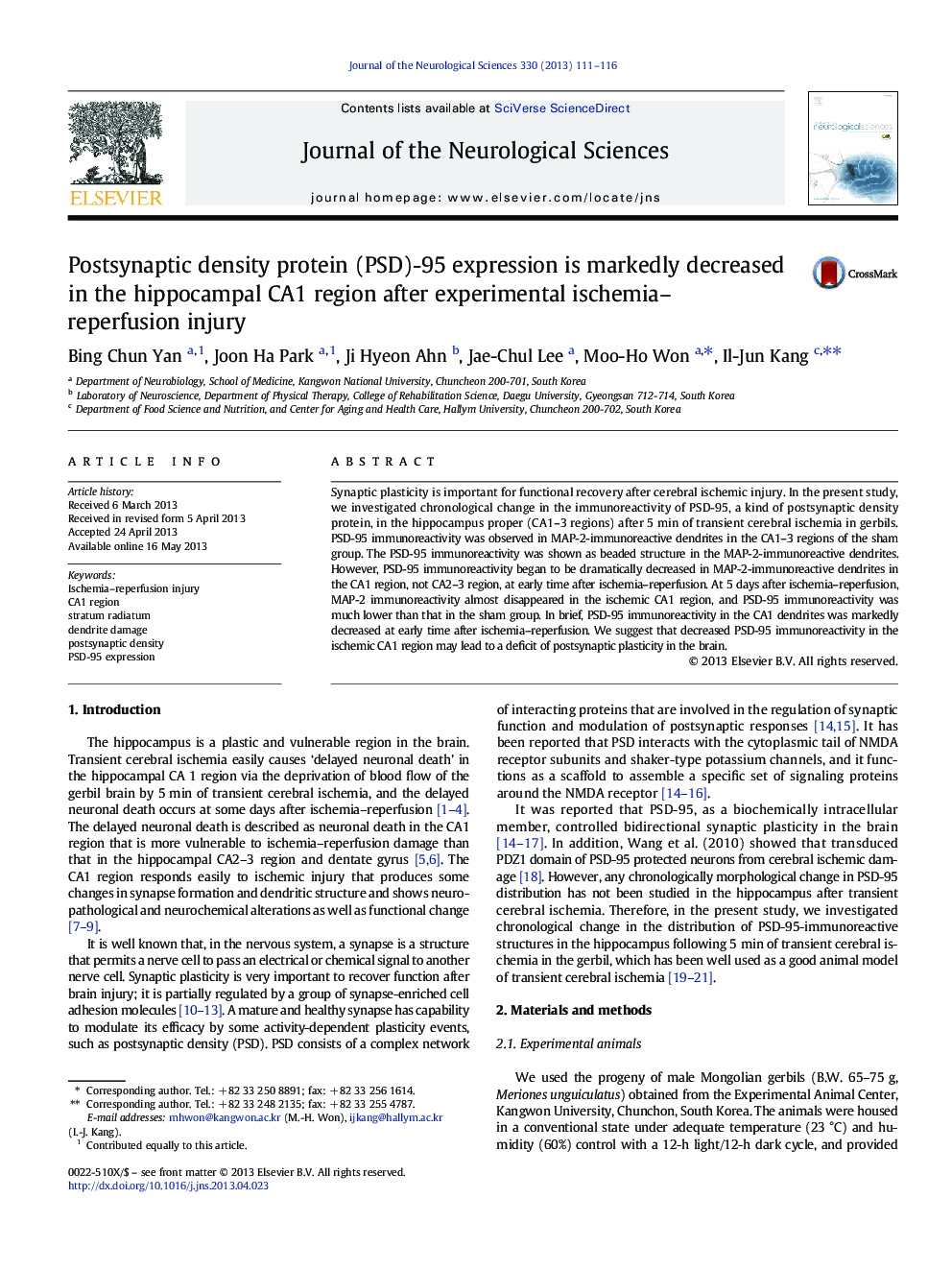| Article ID | Journal | Published Year | Pages | File Type |
|---|---|---|---|---|
| 1913752 | Journal of the Neurological Sciences | 2013 | 6 Pages |
Synaptic plasticity is important for functional recovery after cerebral ischemic injury. In the present study, we investigated chronological change in the immunoreactivity of PSD-95, a kind of postsynaptic density protein, in the hippocampus proper (CA1–3 regions) after 5 min of transient cerebral ischemia in gerbils. PSD-95 immunoreactivity was observed in MAP-2-immunoreactive dendrites in the CA1–3 regions of the sham group. The PSD-95 immunoreactivity was shown as beaded structure in the MAP-2-immunoreactive dendrites. However, PSD-95 immunoreactivity began to be dramatically decreased in MAP-2-immunoreactive dendrites in the CA1 region, not CA2–3 region, at early time after ischemia–reperfusion. At 5 days after ischemia–reperfusion, MAP-2 immunoreactivity almost disappeared in the ischemic CA1 region, and PSD-95 immunoreactivity was much lower than that in the sham group. In brief, PSD-95 immunoreactivity in the CA1 dendrites was markedly decreased at early time after ischemia–reperfusion. We suggest that decreased PSD-95 immunoreactivity in the ischemic CA1 region may lead to a deficit of postsynaptic plasticity in the brain.
